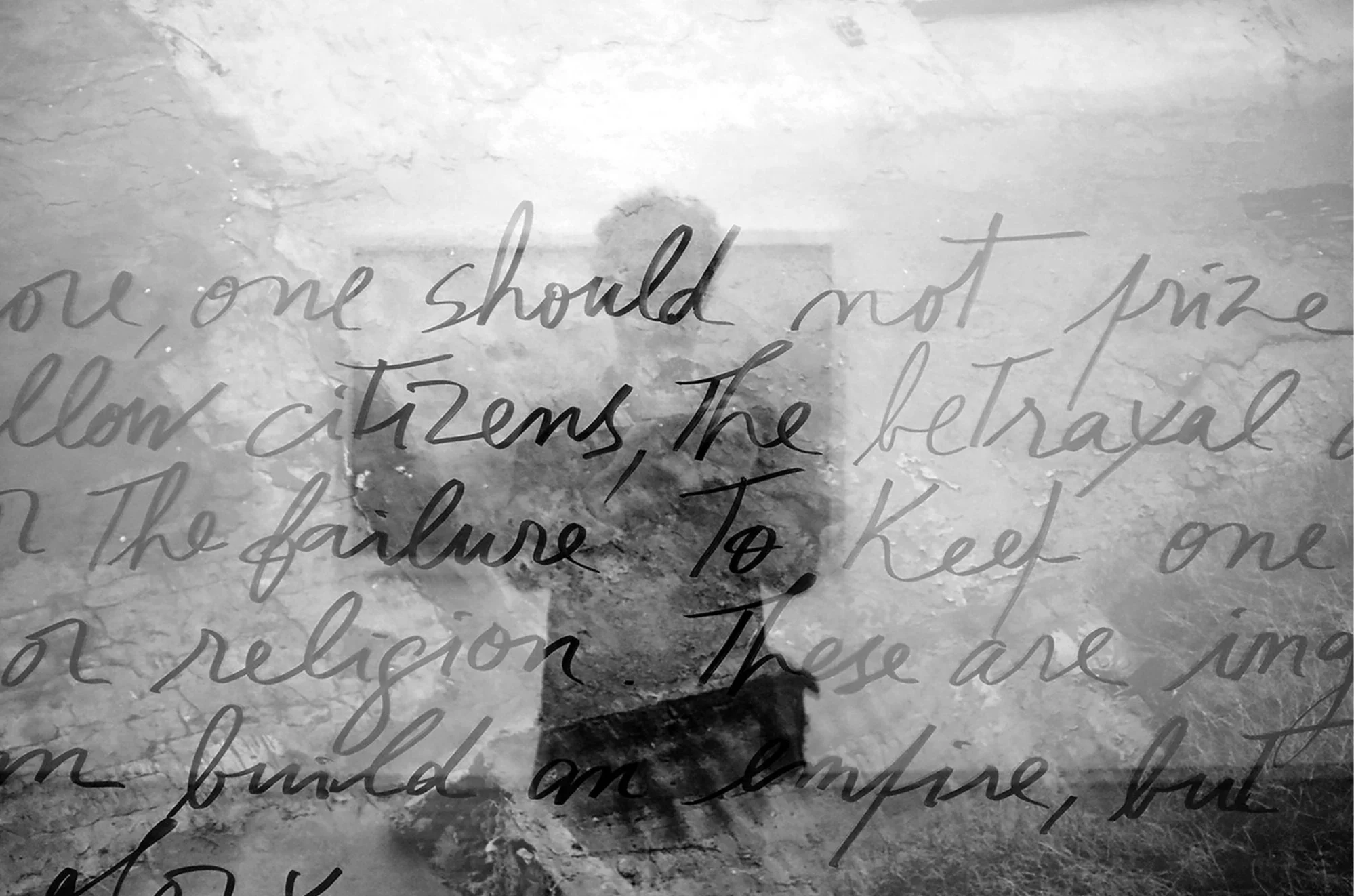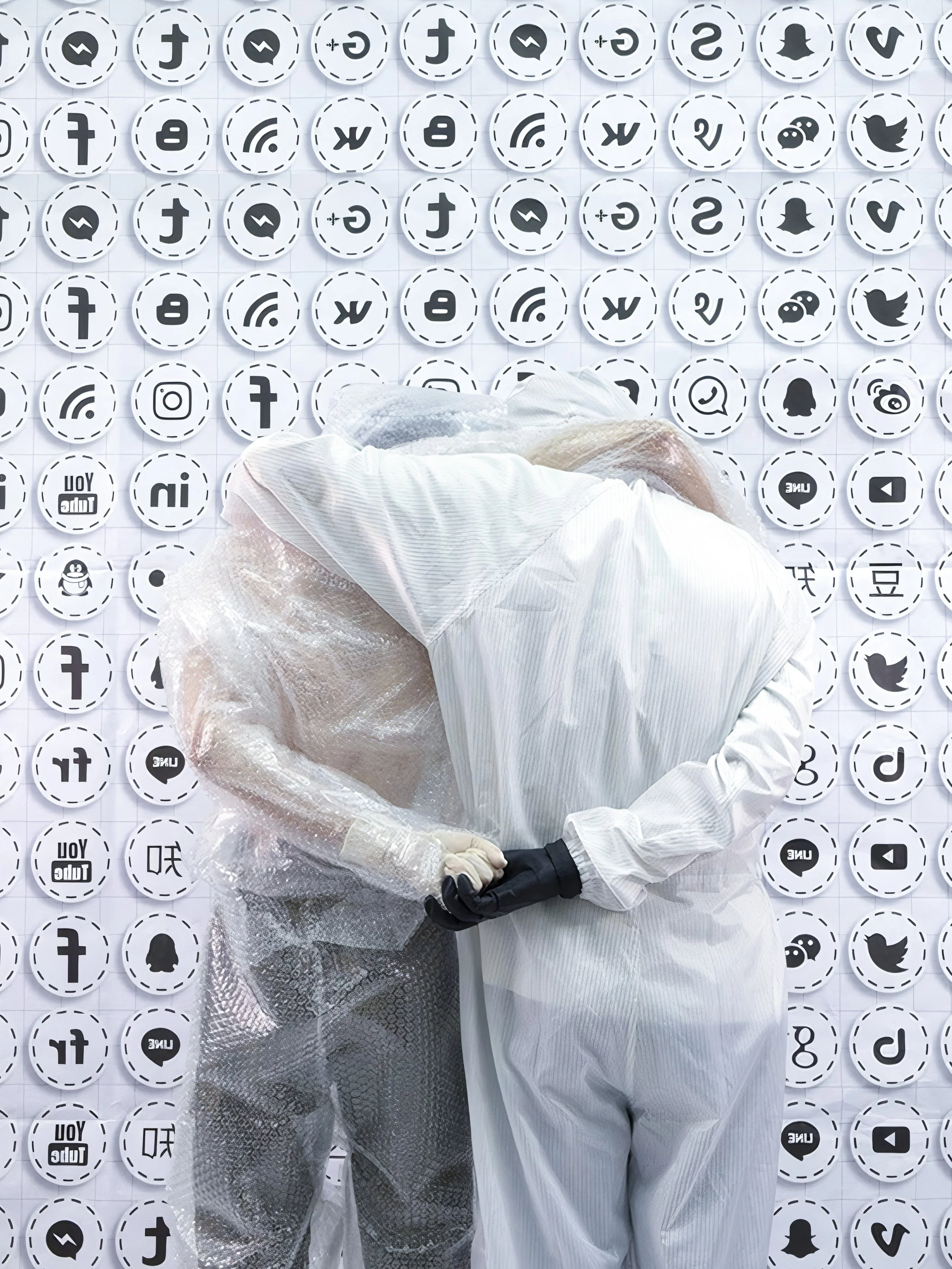10 Questions with Jose Cruzio
José Cruzio (b. 1975) lives in Viseu. He graduated in Fine Arts and Painting and has a one-year post-graduate master's degree in Contemporary Artistic Creation at the University of Aveiro.
At present, he works as a teacher of Visual Arts and as an artist. Since 1998 he has attended many photography, video, and video-art workshops; he worked as a scene photographer in various collective scenic-performative art groups and as a photojournalist in the 2012 Ephemeral Gardens other events.
He participated as an artist in the International Biennials of Vila Nova de Cerveira, Douro / Alijó, and Porto Santo, in the World Triennial of Chamalieres (FR), Miniprint of Cadaqués (ES), and at several events, such as the Ephemeral Gardens in Viseu (PT).
Currently, he is also working in multidisciplinary teams in media arts.
Jose Cruzio
ARTIST STATEMENT
The research will address different concepts as, for example, the continuous questioning of the "place" as far as artistic creation is concerned, among other aspects. It will bring about both collaborative practices and individual ones, through questions of identity, simulations, materiality and immateriality, place, of the objective and subjective, the appropriation and recontextualization, the archive, and, eventually, of the arts in multidisciplinary collaboration, as well as its processes for new insight and policy in art.
It unfolds in different projects, each one recurring to a dominant artistic subject matter and its media, practices, and achievements according to the research lines of each one of them.
[NOTES TO SELF’S Project] on Carlos Vidal’s work #55 © Jose Cruzio
GET YOUR LIMITED EDITION PRINT >>
INTERVIEW
What kind of education or training helped you develop your skillset?
In its various forms and expressions, the interest and taste for Art made me have a predilection for artistic subjects and an academic formation in Art.
Although I had Architecture in my horizons, the decision weighed for the Painting's subject. Later, my interest went for the exploration and creation in digital image and video.
What about the process of creating your work? What is your artistic routine when working?
The process? I have as reference Charles Baudelaire and his flâneur. A walker.
For the unconditioned observation of the world around me as a necessary part of the creative act. Associated with the act of walking, observing. Although I may have some underlying idea that drives me to dislocation and enjoyment, I am not conditioned. I observe what catches my attention, what "captivates" me—even assuming a role of part of what I observe.
In one of these moments, there is a little frenzy that makes me stop to observe the composition that forms in front of me. This moment is, after all, the "act of creation." And I capture. Getting a record/image of the act and context that provided it.
In other projects, especially what concerns video art, such as digital image and sound, the context is very important, like the people who intervene as co-creators. From different contexts and personas, it creates a potential universe of images as of readings about me.
THIS INSIDE YOU KILLS 3 #2 with Jose Luis Neto’s work © Jose Cruzio
How has your art evolved over the years?
My path as evolved by research, trial – and error – until its results in the creation.
Between an individual path - in the field of drawing, photography, and video - and another, transversal, with other artists - with whom, with whose work or with different artistic practices that complement or contribute to a referential and artistic expansion.
In your work, you reflect on the Idea of appropriation and recontextualization. How do you approach other artists' work and choose the work you want to build a dialogue with?
The appropriation and recontextualization's Idea derives from the artistic practice used in my different projects.
We all "appropriate" and adapt to our nature what comes to us. It always is and will be a fact.
In these projects as co-creation, my greatest interest may be in the Idea of "participation" in the work with or of the Other, being part of his vision and universe. With this, I manage to interact how to integrate. And have other readings of me through the look of the Other.
[NOTES TO SELF’s Poject] on JPSerafim’s work © Jose Cruzio
[NOTES TO SELF’S Project] on JPSerafim’s work #15 © Jose Cruzio
What do you hope that the public takes away from this project?
I hope that the public knows my "persona" - my artistic self through my practices and creations, or rather, individual "narratives" by reading what other artists have of me. To see countless possibilities of reading as well as narratives about myself.
What do you see as the strengths of your pieces, visually or conceptually?
Although being something suspicious when talking about my work, as strengths I mention the conceptuality of each project and the imagery specifically associated beyond a subtle artistic map auto/referential - with affinities and, I think, complementarities.
Are you working on any new project right now?
I develop different projects in the area of video and digital photography/image.
In the video and individual works - solo performances-I develop works in partnership with musicians, performers, and video artists. One of them, more grounded in performance-dance and around the concept of home, whether it has physical or imaginary existence, as well as the ways of inhabiting it. It's called "The House."
Another and more developed is entitled [SELF]INSERTIONS. It is based on being part of the work of the Other, of his visual and cultural universe. To be a character/performer in that same universe. And thus to have another perspective on how they see and interpret me.
In a spirit of an audiovisual flâneur, I have the project I WAS HERE. What I film, in my wanderings, is reviewed and remade. The music and the sentence "I WAS HERE" and the geographical coordinates contextualize, in a poetic way, my passage and that moment.
In photography and in another project, I develop and explore visual transcriptions of my everyday life.
They are all different but complementary to each other. As a part of me. As an explorer and creator.
THIS INSIDE YOU KILLS #3 with Jose Luis Neto’s work © Jose Cruzio
What are your thoughts on digital presentations and online exhibitions? Have you participated in any, and do you think they would be beneficial for your work?
The physical presence of the viewer as the interaction with them at the moment is, in my view, essential. Hence, I feel the "readings" - in the moment and after the exchange of impressions about the work exposed-that allow me to have other "narratives," individually and intimately personal. Digital exposures - although in this pandemic and another context-, involve other ways of measuring and observing. I am also implying other means of perceiving the impact of the work as the "readings."
I believe that the display of the devices does not and should not remove the central importance of the work's physical presence as interaction with it.
I will give two examples: "The Handphone Table," by Laurie Anderson, does not give up and can not give up the physical and sensory experience of the spectator in the activation and "appreciation" of the work; in another level and greatness, the virtual contact with "The Weather Project" of Olafur Eliasson does not compare to the immersion of the spectator - in the physical, face and sensory plane as beyond the intelligible- in work itself. Although much of the work I do - or with other artists - is done with digital means, the impact of seeing a video work projected on a large screen and with surrounding sound is not comparable to seeing it on a computer screen....
[NOTES TO SELF’S Project] on Carlos Vidal’s work #63 © Jose Cruzio
[NOTES TO SELF’S Project] on Carlos Vidal’s work #65 © Jose Cruzio
[NOTES TO SELF’S Project] on Antoine Pimentel’s work #5 © Jose Cruzio
How do you keep engaged with the public and the latest developments in the art world now that we can't travel or visit many exhibitions? What are your preferred media?
My involvement with the public and taking into account the latest developments in the art world is only possible "at a distance" and with the means available... In different projects, I resort to virtual communication, and I use online and offline media. I start from a restricted selection of some works as a route and respective dissemination.
Where can our readers find your work? Any exhibition or publication you are looking forward to in the upcoming months?
The different works – individual and collective – are hosted on different websites specifically created for these projects. This is the case of projects A CASA and I_M_ARCHIVES. They will be timely redesigned to accommodate more creations. In the video art area, the works circulate in different international festivals, in photography, in publications, and, exceptionally, in exhibitions in physical spaces.



![[NOTES TO SELF’S Project] on Carlos Vidal’s work #55 © Jose Cruzio](https://images.squarespace-cdn.com/content/v1/5a02e24901002767b723f9e8/1621413427998-3OU7LRSLJLDOY29FY6VA/%5BNOTES+TO+SELF_S+Project%5D_on+Carlos+Vidal_s+work_nrfifty_five_ver1.jpg)



![[NOTES TO SELF’s Poject] on JPSerafim’s work © Jose Cruzio](https://images.squarespace-cdn.com/content/v1/5a02e24901002767b723f9e8/1621413489523-PMC1DZ8A5YPJXKSEA3YX/%5BNOTES+TO+SELF_s+Poject%5D_on+JPSerafim_s+work_nrten_ver1.jpg)
![[NOTES TO SELF’S Project] on JPSerafim’s work #15 © Jose Cruzio](https://images.squarespace-cdn.com/content/v1/5a02e24901002767b723f9e8/1621413500603-WEJ9R38W2UGRF2JI8PTJ/%5BNOTES+TO+SELF_S+Project%5D_on+JPSerafim_s+work_nrfifteen_ver1.jpg)

![[NOTES TO SELF’S Project] on Carlos Vidal’s work #63 © Jose Cruzio](https://images.squarespace-cdn.com/content/v1/5a02e24901002767b723f9e8/1622015669961-VM5NYOUVDCCJBVSDUA2I/%5BNOTES+TO+SELF_S+Project%5D_on+Carlos+Vidal_s+work_nrsixty_three.jpg)














